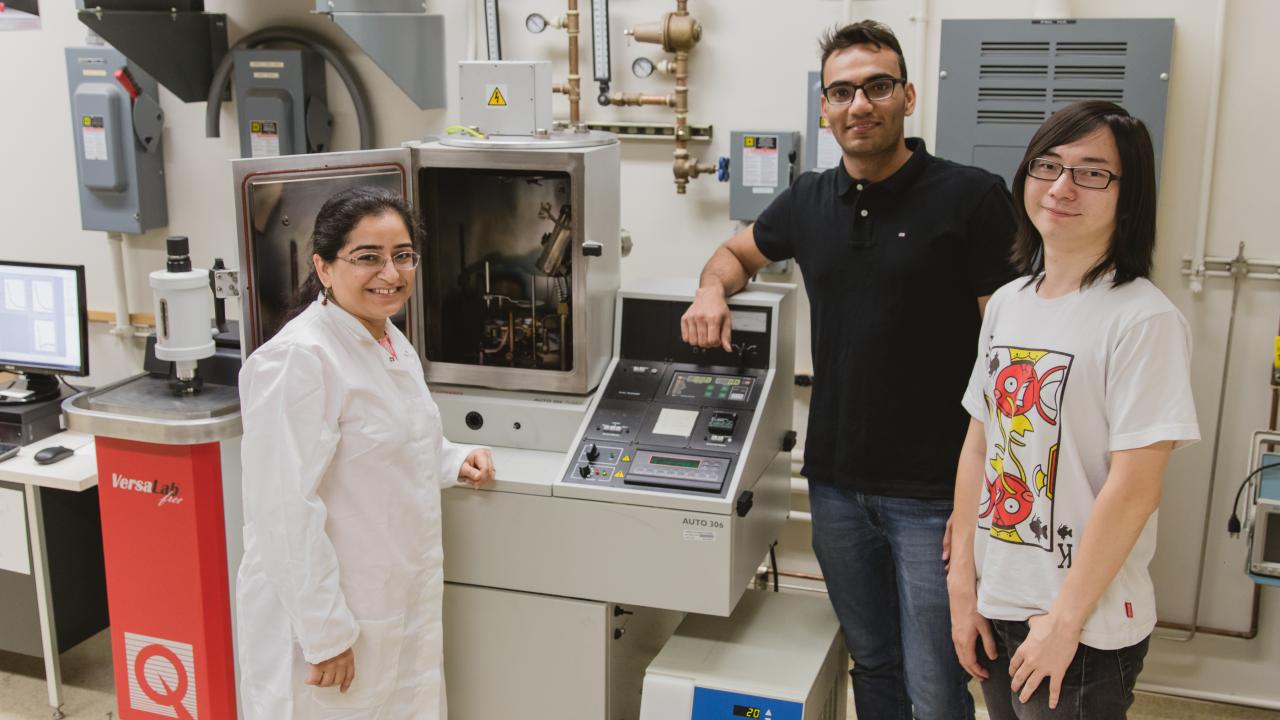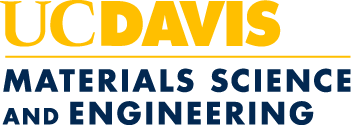
Roopali Kukreja Receives NSF CAREER Award
Materials Science and Engineering Associate Professor Roopali Kukreja has received the prestigious National Science Foundation Faculty Early Career Development (NSF CAREER) Award.
The award recognizes young faculty who can be leaders in their fields and funds research and education projects that should serve as the foundation for their careers. Kukreja joins her colleagues Seung Sae Hong and Scott McCormack and a growing list of 18 other UC Davis faculty who have received CAREER awards in the past two years.
“It’s an honor to be selected, to think some of the ideas we are proposing are worth spending time and money [on], as well as training future students in,” said Kukreja. “I’m super excited to do this research.”
Kukreja and her team will study the nanoscale magnetic properties of high-entropy alloys (HEAs). HEAs are materials comprised of 3-5 elements that have caught the eye of mechanical and civil engineers for their strength and unique mechanical properties. Though nanoscale magnetic properties inform any material’s structure and performance, they so far haven’t been explored for HEAs. Kukreja is excited to use her CAREER Award to dig into this unknown.
“It’s fascinating that you can put 4-5 different magnetic elements together in equal proportions and we have no idea what their magnetic properties are going to look like for different materials systems,” she said. “I’m curious and I’m pretty excited that we got the money to find out.”
The group will focus on short-range ordering, or how the elements fit together in the alloy. This is determined by how the elements’ electron spins are aligned, and it affects bulk material’s behavior and performance. The theory is that some elements might prefer to be closer or farther away from another element in the alloy, but it hasn’t been proven.
Understanding these magnetic properties is key to fine-tuning HEAs for building bridges, vehicles and other structures. The Kukreja lab’s initial experiments also showed that growing HEA thin films could quadruple the magnetism from the bulk material, which means the materials also have potential for magnetic applications like computer memory and electric vehicle batteries.
The first step will be creating homogenous HEA thin films of different compositions and learning how to properly image them with a synchrotron and using techniques developed in the lab. This will give them the foundation to understand how the materials work.
“We want to understand the physics of these systems,” she said. “Can we get an understanding of how they behave at the atomic scale and how that determines the overall macroscopic scale behavior? We want to connect that chain.”
As part of the CAREER Award, Kukreja will also develop a research placement course for undergraduate transfer students. New MSE graduate students take a quarter-long class where they get to know each other, learn about all the labs, meet faculty and work on sample projects before settling on a particular lab. Kukreja thinks this would be beneficial for undergraduates, who often have to seek out research opportunities on their own.
“I think it would be cool to give them sort of a pathway to get involved in research,” she said.
Kukreja received her B.Tech in metallurgical engineering and materials science from the Indian Institute of Technology, Bombay, earned her M.S. and Ph.D. in materials science and engineering from Stanford University and completed postdoctoral work at UC San Diego. She joined UC Davis in 2016 and has since received the Air Force Office of Science and Research Young Investigator Grant, the American Physical Society’s Magnetism Outreach Activities Award and a Department of Energy Early Career Award.
